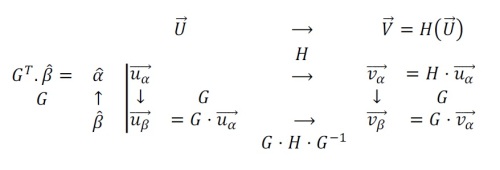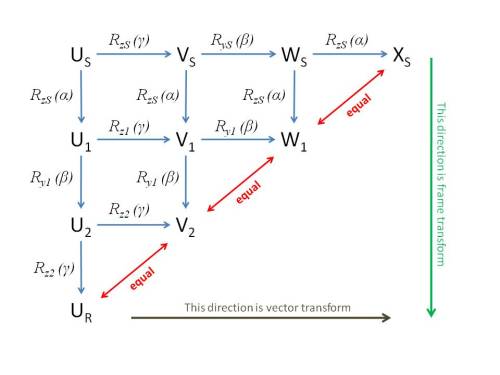Few things have to say in advance.
- A Vector is NOT its coordinate
- A vector can only be coordinated when there is a frame.
- A frame is a set of “reference” vectors, which span the whole space. Those reference vectors are called basis of a frame.
- a transformation is on a vector or its coordinate. And it can be represented by a matrix.
- A Matrix should act on a coordinate or basis, but not a vector.
is the column vector of basis reference vector.
is the coordinate column vector in
basis.
is the vector in space
is the transformed vector in space.
and
are the matrix of transform.
has the same meaning of
, only the matrix representation of the transform is different due to different basis.
the Euler’s rotation can be illustrated by series of the diagram. each rotation of frame can be made by each . but when doing real calculation, after we apply the matrix G on the coordinate, the basis changed. when we using the fact that a matrix can be regard as a frame transform or vector transform. we have follow:
This diagram can extend to any series of frame rotation. and the triangle just demonstrate how 2 steps frame transform can be reduced to the vector transform in same frame.
i finally feel that i understand Euler angle and changing of frame fully. :D
HERE is a note on vector transform and frame transform.



Leave a comment